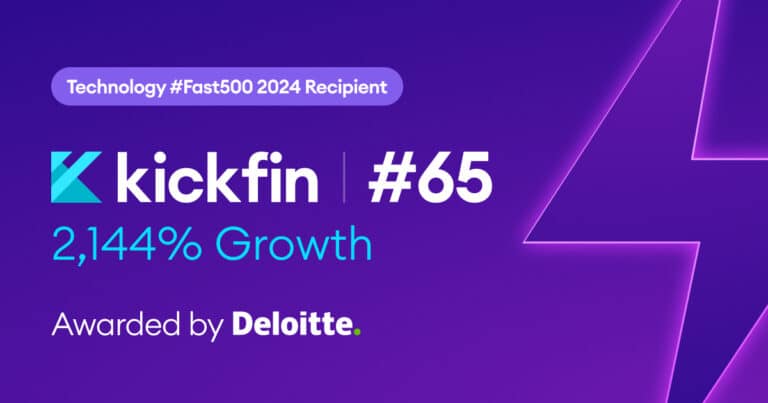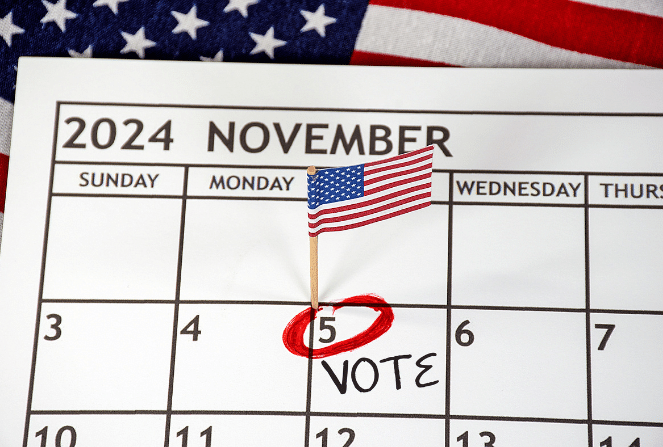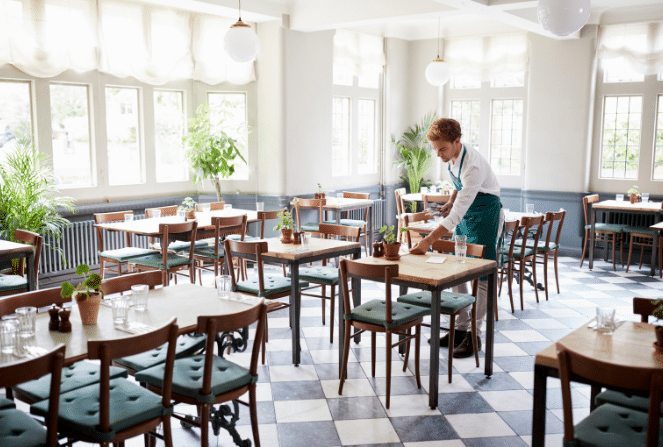When people are looking to get into the hospitality industry, they often make the assumption that they’ll need to start from scratch: come up with a concept, lock down real estate, purchase equipment, build a team — the list goes on. But that’s not always necessary.
Buying an existing restaurant business can allow restaurateurs to jump right into daily operations, without a lot of the legwork that’s required when you’re just starting up.
Buying a restaurant isn’t exactly risk-free, though — and it comes with its own set of challenges. If you have dreams of running your own restaurant or bar (or if you’re already in the biz and want to explore other options), here’s what to know about making a restaurant acquisition.
6 benefits of buying an existing restaurant
We’ll start with the upsides to buying an existing concept, versus getting your own off the ground. The running theme here is that the groundwork is laid, so a lot of those big decisions, and investments (as well as all the time and brainpower they require) are often already taken care of.
1. You might have a ready-made team
The recruiting and hiring process is a big part of launching a restaurant, and the team you build can have a direct impact on your success. But finding (and retaining) good talent is tough: the hospitality labor market has been extremely competitive in the past few years. It can be hard to find qualified, reliable employees who work well together.
When you buy an existing restaurant, you’ll likely already have a team (and a team culture) in place. While you may find there are some kinks to work out or changes to make once you get a feel for overall strengths, weaknesses and gaps, having a team who knows their role and each other can save you a lot of headache.
2. You don’t have to play the real estate game
You know what they say: location, location, location…can be a nightmare to find. Another perk of buying an existing restaurant is that you may not have to go through the grueling process of finding a good restaurant location.
While a previous owner may be selling an existing restaurant because the lease is expiring, this isn’t always the case. In many instances, existing leases sell at below market value. If you have to buy a new lease, the landlord can reset it to a price that’s consistent with the going market rate, which means essentially, that you’ll be charged more.
Our advice: take advantage of an existing lease to save money. But be sure there is enough time left on the lease to recover your expenses. Also, make sure it will protect you from unexpected liabilities.
3. You might be able to leverage current operating licenses
Applying for operating licenses when you open a restaurant can often be a monumental task (check out our post on getting your liquor license, if you haven’t already!). When you’re looking at buying a restaurant, you may be able to use the existing license while your applications are processing, saving you a good chunk of time and money.
4. You have access to equipment and other physical assets
One of the biggest benefits of buying an existing restaurant is that it will already come with the equipment you’ll need to operate the business, as this is a costly and time-consuming expense. (Keep in mind, though, that the state of the assets will likely be reflected in the purchase price.) Some of the equipment and machinery you’ll most likely find include:
- An HVAC system
- A fully-operational kitchen
- Code-required fire-prevention system
- A ventilation system
Of course, you’ll want to evaluate the equipment to make sure it’s in proper working condition. Hire a professional to inspect it if necessary.
Something else to think about is whether the restaurant equipment is owned or was being leased by the previous owner. If it was leased, be sure whatever contract was negotiated can be easily transferred to you with the same terms and conditions. Some questions to ask about previously-owned equipment are:
- When was the equipment purchased?
- Are there any current issues?
- When was the equipment last repaired?
- Is any of the equipment still under warranty?
5. You’ve got an existing customer base
Because the restaurant you’re interested in buying has already been in operation, it’s (probably) already got a built-in customer base. While this doesn’t necessarily mean you’ll spend less on marketing and advertising — that’s usually necessary whether you want to maintain or grow your business — it does mean there’s a little less risk involved. That is, have a general idea of what to expect in terms of volume, whereas opening a new restaurant is always a gamble.
6. Less financial risk
Generally speaking, it costs less to buy an already established restaurant than starting a new one, especially when you consider the risk you’re mitigating and the time you’re saving compared to launching your own restaurant.
Questions to ask before buying a restaurant
Just like you would before any big purchase or investment, you need to do your due diligence prior to buying a restaurant business. (In fact, it’s never a bad idea to consult a professional advisor, like an attorney, business broker, or even an M&A advisor, depending on the size of the transaction.)
While this certainly isn’t an exhaustive list of questions to ask, here are a few to get you started. And remember: don’t just rely on the previous owner’s answers. Make sure you’ve got access to financial/accounting records, contracts, permits, etc., and do your own market research so you get a clear, accurate picture of the state of the business.
- Why is the owner selling the restaurant?
This should be the first question you ask. Maybe the owner wants to pursue other career opportunities or retirement — but there could also be some operational, financial, or team issues that you need to know about. They might not be dealbreakers, but just like you’d inspect a home before you buy it, you certainly want to know the good, the bad and the ugly before you sign on the dotted line.
- How is the restaurant performing?
A common practice when looking at buying a restaurant is getting access to any and all financial records the previous owner has kept. This will help provide valuable insight into the state of the current business.
A (very) general rule of thumb is that many restaurants are valued at three to five times the yearly profit — but of course, that’s highly dependent on a wide range of variables. (Here again, it’s helpful to have an advisor who’s been through the process before to help answer questions around business value.)
- What’s the competitive landscape like?
Which restaurants does your target compete against? How do you stand out among them? How do you expect that to change in the next 3-5 years? It’s not a bad idea to do a SWOT analysis (Strengths, Weaknesses, Opportunities, Threats) to get a really good understanding of how the business is positioned in the market.
- Which employees can you expect to stay on after the transition?
When you’re buying a restaurant, it often comes with employees who have a history with the establishment. But sometimes when a new owner comes in, it can change the culture (for better or worse). Plus: some employees — especially key employees — may have developed strong working relationships with the owner. All of this can lead to personnel shifts. Some may be inconsequential, but if a chef or top managers chooses to leave, that could have a direct impact on the business.
You can probably get good insight from the seller, but as soon as you’re ready to let the rest of the team know about the potential (or pending) sale, have some very candid conversations with the current employees and get a feel for culture, chemistry, and their willingness to stay on board.
Red flags and mistakes to avoid
While there are plenty of good reasons to buy a restaurant, that doesn’t mean there aren’t potential roadblocks to consider. When looking to buy a restaurant, you have the right to know about any past problems that affected the business. Here are some things to watch out for:
- Liabilities and legal issues
Before you make your purchase, make sure there are no existing issues, legal or otherwise — like health code violations, unpaid taxes, ongoing litigation, etc. If there are, they could become your problem. You’ll also be responsible for all financial obligations so it’s vital you have a clear picture of the business’s financial history.
- The restaurant’s reputation and brand
If you’re serious about buying a particular establishment, you’re likely already aware of any serious reputation/brand issues. But just in case: make sure you know how the business is perceived and whether it’s something you’d like to address.
For example, maybe the restaurant you’re buying is geared more toward business professionals, but you’d like to make it a hot weekend spot; or perhaps you get a lot of college kids and you want it to become more family friendly. Even if you’re buying a fixer-upper and you’re well aware that the brand needs work, it’s still worth understanding what needs to change. So: dig into review sites like Yelp, check out social media pages, or even do some research on your local Subreddit and other local online communities.
- Refusal to sign a non-compete
While this doesn’t have to make or break the deal, if the owner declines to sign a non-compete agreement—a contract stating that employees will not start their own version of the restaurant you’re buying in direct competition—it’s something to be wary of. This is especially true if the owner is also the chef, which means he or she might be able to take the recipes and menu concept with them, forcing you to start over and create your own.
To launch or to buy?
Launching your own concept is exciting — and it puts you in the driver’s seat. Like building your own home, you get to have a say in every single decision from the get-go.
But it also takes time, money, and a whole lot of patience. If your goal is to simply get into the restaurant business and you don’t have a concept that you’re set on bringing to life, consider feeling out the market and seeing what’s out there. When you ask the right questions and do your due diligence, buying a restaurant can be just as rewarding (personally and financially) as starting your own.





